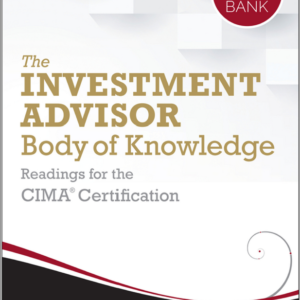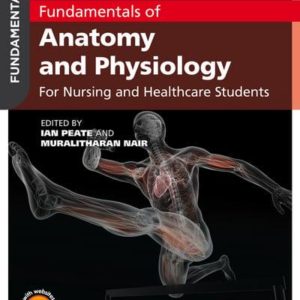Lehninger Principles of Biochemistry 7th Edition by David L. Nelson, Michael M. Cox
$25
Description
Lehninger Principles of Biochemistry 7th Edition by David L. Nelson, Michael M. Cox
Chapter 1 Chapter 2 Water
Living Graphs:
Henderson-Hasselbalch Equation
Titration Curve for a Weak Acid
Chapter 3 Amino Acids, Peptides, and Proteins
UPDATED Molecular Structure Tutorial:
Protein Architecture, section on amino acids
Animated Biochemical Technique:
SDS Gel Electrophoresis
Chapter 4 The Three-Dimensional Structure of Proteins
UPDATED Molecular Structure Tutorial:
Protein Architecture, including sections on:
Sequence and Primary Structure
The α Helix
The β Sheet
The β Turn
Introduction to Tertiary Structure
Tertiary Structure of Fibrous Proteins
Tertiary Structure of Small Globular Proteins
Tertiary Structure of Large Globular Proteins
Quaternary Structure
Chapter 5 Protein Function
UPDATED Molecular Structure Tutorials:
Oxygen-Binding Proteins, including sections on:
Myoglobin: Oxygen Storage
Hemoglobin: Oxygen Transport
Hemoglobin Is Susceptible to Allosteric Regulation
Defects in Hb Lead to Serious Disease
MHC Molecules
Living Graphs:
Protein-Ligand Interactions
Binding Curve for Myoglobin
Cooperative Ligand Binding
Hill Equation
Animated Biochemical Technique:
Immunoblotting
Chapter 6 Enzymes
NEW Case Studies:
Toxic Alcohols—Enzyme Function
A Likely Story—Enzyme Inhibition
UPDATED Animated Mechanism Figure:
Chymotrypsin Mechanism
Living Graphs:
Michaelis-Menten Equation
Competitive Inhibitor
Uncompetitive Inhibitor
Mixed Inhibitor
Lineweaver-Burk Equation
Chapter 8 Nucleotides and Nucleic Acids
UPDATED Molecular Structure Tutorial:
Nucleotides
NEW Simulations:
Nucleotide Structure
DNA/RNA Structure
Sanger Sequencing
Polymerase Chain Reaction
NEW Nature Article with Assessment:
LAMP: Adapting PCR for Use in the Field
Animated Biochemical Techniques:
Dideoxy Sequencing of DNA
Polymerase Chain Reaction
Chapter 9 DNA-Based Information Technologies
UPDATED Molecular Structure Tutorial:
Restriction Endonucleases
NEW Simulation:
CRISPR
NEW Nature Articles with Assessment:
Assessing Untargeted DNA Cleavage by CRISPR/Cas9
Genome Dynamics during Experimental Evolution
Animated Biochemical Techniques:
Plasmid Cloning
Reporter Constructs
Synthesizing an Oligonucleotide Array
Screening an Oligonucleotide Array for Patterns of Gene Expression
Yeast Two-Hybrid Systems
Chapter 11 Biological Membranes and Transport
Living Graphs:
Free-Energy Change for Transport (graph)
Free-Energy Change for Transport (equation)
Free-Energy Change for Transport of an Ion
Chapter 12 Biosignaling
UPDATED Molecular Structure Tutorial:
Trimeric G Proteins
Chapter 13 Bioenergetics and Biochemical Reaction Types
Living Graphs:
Free-Energy Change
Free-Energy of Hydrolysis of ATP (graph)
Free-Energy of Hydrolysis of ATP (equation)
Chapter 14 Glycolysis, Gluconeogenesis, and the Pentose Phosphate
Pathway
NEW Interactive Metabolic Map:
Glycolysis
NEW Case Study:
Sudden Onset—Introduction to Metabolism
UPDATED Animated Mechanism Figures:
Phosphohexose Isomerase Mechanism
The Class I Aldolase Mechanism
Glyceraldehyde 3-Phosphate Dehydrogenase Mechanism
Phosphoglycerate Mutase Mechanism
Alcohol Dehydrogenase Mechanism
Pyruvate Decarboxylase Mechanism
Chapter 16 The Citric Acid Cycle
NEW Interactive Metabolic Map:
The citric acid cycle
NEW Case Study:
An Unexplained Death—Carbohydrate Metabolism
UPDATED Animated Mechanism Figures:
Citrate Synthase Mechanism
Isocitrate Dehydrogenase Mechanism
Pyruvate Carboxylase Mechanism
Chapter 17 Fatty Acid Catabolism
NEW Interactive Metabolic Map:
β-Oxidation
NEW Case Study:
A Day at the Beach—Lipid Metabolism
UPDATED Animated Mechanism Figure:
Fatty Acyl-CoA Synthetase Mechanism
Chapter 18 Amino Acid Oxidation and the Production of Urea
UPDATED Animated Mechanism Figures:
Pyridoxal Phosphate Reaction Mechanisms (3)
Carbamoyl Phosphate Synthetase Mechanism
Argininosuccinate Synthetase Mechanism
Serine Dehydratase Mechanism
Serine Hydroxymethyltransferase Mechanism
Glycine Cleavage Enzyme Mechanism
Chapter 19 Oxidative Phosphorylation
Living Graph:
Free-Energy Change for Transport of an Ion
Chapter 20 Photosynthesis and Carbohydrate Synthesis in Plants
UPDATED Molecular Structure Tutorial:
Bacteriorhodopsin
UPDATED Animated Mechanism Figure:
Rubisco Mechanism
Chapter 22 Biosynthesis of Amino Acids, Nucleotides, and Related
Molecules
UPDATED Animated Mechanism Figures:
Tryptophan Synthase Mechanism
Thymidylate Synthase Mechanism
Chapter 23 Hormonal Regulation and Integration of Mammalian
Metabolism
NEW Case Study:
A Runner’s Experiment—Integration of Metabolism (Chs 14–18)
Chapter 24 Genes and Chromosomes
Animation:
Three-Dimensional Packaging of Nuclear Chromosomes
Chapter 25 DNA Metabolism
UPDATED Molecular Structure Tutorial:
Restriction Endonucleases
NEW Simulations:
DNA Replication
DNA Polymerase
Mutation and Repair
NEW Nature Article with Assessment:
Looking at DNA Polymerase III Up Close
Animations:
Nucleotide Polymerization by DNA Polymerase
DNA Synthesis
Chapter 26 RNA Metabolism
UPDATED Molecular Structure Tutorial:
Hammerhead Ribozyme
NEW Simulations:
Transcription
mRNA Processing
NEW Animated Mechanism Figure:
RNA Polymerase
NEW Nature Article with Assessment:
Alternative RNA Cleavage and Polyadenylation
Animations:
mRNA Splicing
Life Cycle of an mRNA
Chapter 27 Protein Metabolism
NEW Simulation:
Translation
NEW Nature Article with Assessment:
Expanding the Genetic Code in the Laboratory
Chapter 28 Regulation of Gene Expression
UPDATED Molecular Structure Tutorial:
Lac Repressor
Lehninger Principles of Biochemistry
Special Theme: Evolution
Every time a biochemist studies a developmental pathway in nematodes,
identifies key parts of an enzyme active site by determining which parts are
conserved among species, or searches for the gene underlying a human
genetic disease, he or she is relying on evolutionary theory. Funding agencies
support work on nematodes with the expectation that the insights gained will
be relevant to humans. The conservation of functional residues in an enzyme
active site telegraphs the shared history of all organisms on the planet. More
often than not, the search for a disease gene is a sophisticated exercise in
phylogenetics. Evolution is thus a foundational concept for our discipline.
Some of the many areas that discuss biochemistry from an evolutionary
viewpoint:
■ Changes in hereditary instructions that allow evolution (Chapter 1)
■ Origins of biomolecules in chemical evolution (Chapter 1)
■ RNA or RNA precursors as the first genes and catalysts (Chapters 1, 26)
■ Timetable of biological evolution (Chapter 1)
■ Use of inorganic fuels by early cells (Chapter 1)
■ Evolution of eukaryotes from simpler cells (endosymbiont theory)
(Chapters 1, 19, 20)
■ Protein sequences and evolutionary trees (Chapter 3)
■ Role of evolutionary theory in protein structure comparisons (Chapter 4)
■ Evolution of antibiotic resistance in bacteria (Chapter 6)
■ Evolutionary explanation for adenine nucleotides being components of
many coenzymes (Chapter 8)
■ Comparative genomics and human evolution (Chapter 9)
■ Using genomics to understand Neanderthal ancestry (Box 9-3)
■ Evolutionary relationships between V-type and F-type ATPases (Chapter
11)
■ Universal features of GPCR systems (Chapter 12)
■ Evolutionary divergence of β-oxidation enzymes (Chapter 17)
■ Evolution of oxygenic photosynthesis (Chapter 20)
■ NEW Presence of organelles, including nuclei, in planctomycete bacteria
(Box 22-1)
■ Role of transposons in evolution of the immune system (Chapter 25)
■ Common evolutionary origin of transposons, retroviruses, and introns
(Chapter 26)
■ Consolidated discussion of the RNA world hypothesis (Chapter 26)
■ Natural variations in the genetic code—exceptions that prove the rule (Box
27-1)
■ Natural and experimental expansion of the genetic code (Box 27-2)
■ Regulatory genes in development and speciation (Box 28-1)
You must be logged in to post a review.





Reviews
There are no reviews yet.